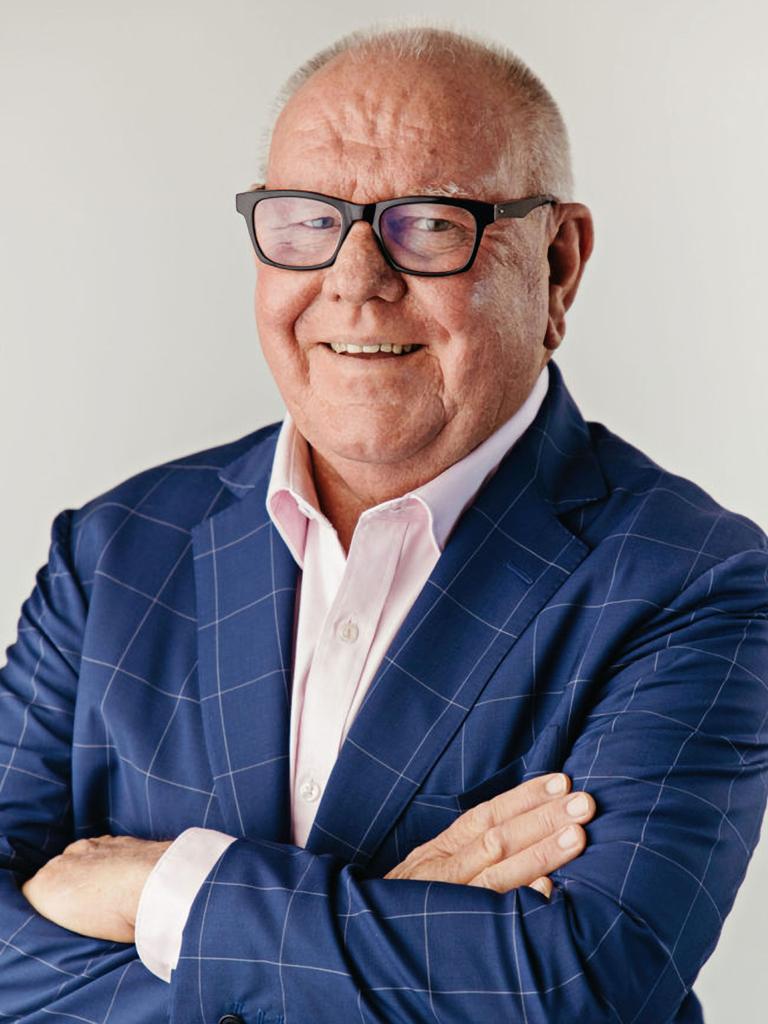Liontown pegs out the limits of lithium boom
It could be a ‘YouTube moment’ for the loyal investor base in the Perth lithium hopeful as an extraordinary ride nears its end.
Business
Don't miss out on the headlines from Business. Followed categories will be added to My News.
Has the lithium boom run its course or is there plenty of blue sky left to mine? That’s the dilemma facing the charged-up investor base in Tim Goyder’s Liontown Resources with the mining hopeful finding a $6.6bn offer too good to refuse.
It’s the age-old question facing those sitting on foundation assets. Facebook famously paid $US1bn for Instagram a decade ago. Google paid a bargain $US1.7bn for YouTube in 2006, while more recently Microsoft has bet $US13bn on OpenAI, the company sitting behind powerful artificial intelligence tool OpenAI.
In hindsight, the deals were all seemingly done on the cheap, however the substantial balance sheet muscle, ongoing investment and distribution firepower arguably made each tech player worth more than a standalone company.

Hardrock mining and Silicon Valley might be a world apart but the parallels are there when it comes to future valuations and this is what Liontown faces.
Like the early days of watching cat videos over the internet or posting holiday snaps on Instagram, we just don’t know how to put a value on the long-term price of lithium. However, with markets in retreat, Perth junior Liontown may have found the upper limit for now.
After months of being seriously stalked and three earlier approaches, Goyder’s Liontown board has come around to US lithium play Albemarle’s $3.00 a share cash offer. The offer pitched over the weekend represents a 20 per cent bump from the latest $2.50 approach that lobbed in March. Albermarle opened the bidding last October at $2.20 a share.
At the same time, Albermarle has shown its determination in quietly building a stake in Liontown to just below 5 per cent. To show how far the lithium boom has come, this time three years ago Liontown shares were trading at just 14c each.
Evolution
Liontown is in the process of moving along the fraught path of explorer to producer, with the flagship $900m Kathleen Valley lithium project in Western Australia eyeing first production in mid-2024. The ambitious mine has an underground element which adds to the cost and the geology and capex blowouts are always in the back of the mind for seasoned resource investors. But there is the longer-term play – based on targeted production Kathleen Valley has a 23-year life, with production increasing to 700,000 tonnes of spodumene output a year from a very low risk jurisdiction.

The mine too also represents value for future US customers given production qualifies for a credit under Joe Biden’s monster Inflation Reduction Act. At the same time the mine is regarded as strategic with key financial backing pledged from export credit agencies including the US Export-Import Bank.
Even so, the New York-listed Albermarle will bring balance sheet and cash to the most critical phase of the Kathleen Valley ramp-up. Albermarle, one of the world’s biggest lithium producers, is set to take on future capex commitments and further uncontracted volumes. The mine too needs a friendly processing partner and Albermarle is in need of more reliable supply for its Kererton processing plant in WA.
The takeover comes with a backdrop where the view from global car makers is that demand for lithium is only going to increase and quickly. Already there’s been a land grab to lock-in lithium supplies, the material underpinning EV batteries.
Supply gap
A widely-quoted Wood Mackenzie report into the outlook for lithium markets forecasts a global supply shortage from 2028 and beyond as raw production can’t keep pace with surging demand. The supply gap blows out into the 2030s and remains for the decade beyond. Underpinning this is the penetration of EVs, which on a bullish case are expected to rise to 50 per cent toward the end of the decade, Wood Mackenzie says. Others including BHP have a different view with the mining giant opting to sit out of the boom, arguing new supply in coming years will flood demand for the metal.
However, all this upside in lithium is far from what markets are pricing in today. Amid concerns about the health of China’s economy and carmaker production there, the price of the metal has dropped sharply in recent months. Spot pricing into China has fallen 35 per cent since the start of July and is down more than 50 per cent from the start of the year.
Liontown and Albermarle have a common customer base as both have direct supply contracts already with Elon Musk’s Tesla as well as Detroit’s Ford. Liontown also has an offtake agreement in place with Korean battery giant LG.
Albermarle remains a highly motivated buyer with the company looking to diversify further into low-risk countries as it faces a new reality in Chile where its key mines are based. Chile’s leftist government is pushing for quasi-nationalisation of the nation’s lithium industry. Under the proposals, private companies would be required to form joint ventures with a new state-owned lithium player.
At $3.00 a share this represents a full premium, but its not going to be an easy ride for Albermale. Liontown’s so-called long tail of retail investors that got in on the ground floor are in for the long haul of the lithium boom and could complicate any deal.
Liontown’s Tim Goyder has a loyal following among Perth’s investor set and rightly so given his record of making his backers very wealthy. The endorsement of Liontown’s board implies he has given the deal his blessing. It also means he stands to walk away with just under $1bn in cash.
Canva test
Aussie tech darling Canva has become the litmus test for how super funds are valuing hundreds of billions of dollars in unlisted investments, and some have been dragging their feet when it comes to realising their losses.
Financial regulator APRA has singled out Canva, given the stratospheric rise in the value of the privately held online design company that at its peak was thought to be worth more than $60bn and counted many Australian super funds as backers. The value of Canva has since fallen sharply amid a broader tech crash.

In the whole, super funds have been doing a better job valuing their unlisted assets APRA says, and most fund trustees had an appropriate valuation of Canva. However, in some cases, funds were slow to push through quarterly revolutions and not all fund boards were getting the right information needed to adequately value the tech company.
Industry fund Hesta is one of the biggest direct local super investors in Canva, given it has an active venture capital portfolio, while most funds hold their stake indirectly. APRA declined to name funds it targeted in the Canva test.
The Canva test has serious implications for super funds. Not only does it give members a more accurate indication on how their retirement savings are performing, it raises pressure on funds over a new and potentially bigger problem area: office towers.
More funds have a broader exposure to commercial property, and in some cases this is running into the billions of dollars for some funds. A collapse in the much troubled office tower market as interest rates rose has led to double-digit losses. Recent on-market transactions have confirmed the heavy losses, particularly in non-premium towers.
Writedowns
Mega funds from AustralianSuper to Cbus have pushed through heavy writedowns of parts of their property portfolio, which weighed on their annual results. In total, Australian funds have more than $115bn exposure to unlisted property. They have another $111bn tied up with unlisted shares.
In recent months, APRA released best practice guidance telling funds it expects quarterly valuation of unlisted investments. It gave some scope for fund boards to adopt a different approach depending on the asset class – however, if this approach was taken APRA would need an explanation. Super funds were also expected to regularly stress test their investments in unlisted assets.

The best quarterly read though in the valuation of Canva has been through US Securities and Exchange Commission filings of global investment firm Franklin Templeton, which made quarterly adjustments to its valuations. Others including US Fund T. Rowe Price also had exposure, and most of the markdowns by both funds were taking place earlier last year while the tech stock bubble was bursting as US interest rates were being driven sharply higher.
Valuations of unlisted assets – which also extend to less glamorous investments such as infrastructure, is not an exact science given funds are weighing up a range of factors from interest rates, cash flows, growth outlook and valuation of similar firms. The private sale of shares is the strongest indication of value.
Last month early Canva backer, Australian venture capital firm Blackbird, sold some of its stake to a consortium of US tech investors led by ICONIQ and Philippe Laffont’s Coatue Management. That transaction, widely seen as a precursor to a likely US sharemarket listing, gave Canva a valuation of $US25.5bn ($39.5bn).
johnstone@theaustralian.com.au
More Coverage
Originally published as Liontown pegs out the limits of lithium boom









